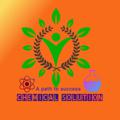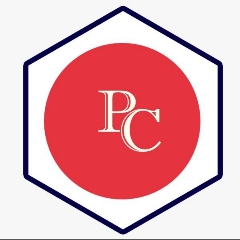Question 1 :
Correct order of electronegativity of N, P, C and Si on Pauling scale is :
Question 2 :
What is the atomic number of last member of the seventh period of the extended form of periodic table?
Question 3 :
Group 18 of the periodic table is known by the name as :
Question 4 :
Which of the following pairs has both members from the same group of the periodic table?
Question 8 :
Atomic size ___________ in a period due to ______ in nuclear charge.<br/>
Question 9 :
Among Li, Be, N and F, the element having the largest atomic radius is<br>
Question 10 :
The elements A, B, C, D and E have atomic number 9, 11, 17, 12 and 13 respectively.<br>Which pair of elements belong to the same group?
Question 11 :
A balloon is filled with hydrogen at room temperature. It will burst if pressure exceeds $0.2$ bar. <div>If at $1$ bar pressure the gas occupies $22.7$ L volume up to what volume can the balloon be expanded?</div>
Question 13 :
The density of $NH_3$ at $30^oC$ and $5$ atm pressure is:<br/>
Question 14 :
If increase in temperature and volume of an ideal gas by n times, then initial pressure of $P$ changes to:
Question 18 :
The time taken for a certain volume of a gas 'X' to diffuse through a small hole is 2 minutes. It takes 5.65 minutes for oxygen to diffuse under the similar conditions. The molecular weight of 'X' is
Question 19 :
The average kinetic energy of all the molecules is assumed to be:
Question 20 :
Densities of two gases are in the ratio $1 : 2$ and their temperature are in the ratio $2 : 1$, then the ratio of their respective pressure is :
Question 21 :
Given the species N<sub>2</sub>, CO, NO<sup>+</sup> and CN<sup>-</sup> which of the following statements are true for them -<br>(I) All the species are diamagnetic<br>(II) All the species are isostructural<br>(III) All the species have identical bond order<br>(IV) More than one species have zero dipole Moment
Question 23 :
The ease of formation of which of following chlorides is maximum?
Question 24 :
The bond between atoms of two elements of atomic number $37$ and $53$ is:
Question 27 :
The correct electronic configuration of neutral $Ca$ and $O$ are respectively:
Question 30 :
The ionic bonds $X^{\displaystyle+}Y^{\displaystyle-}$ are formed when<br>(I) electron affinity of $Y$ is high<br>(II) ionization energy of $X$ is low<br>(III) lattice energy of $XY$ is high<br>(IV) lattice energy of $XY$ is low
Question 31 :
Three dimensional arrangements which can be interconverted into one another due to rotation along a single bond are known as
Question 33 :
If the light waves pass through a nicol prism then all the oscillations occur only in one plane, such beam of light is called as
Question 37 :
The general formula <img style='object-fit:contain' src='https://storage.googleapis.com/teachmint/question_assets/JEE%20Main/5e7995efc6cb6261b35b3fc2' height='26' width='70' > could be for open chain
Question 38 :
A compound has {tex} 3 {/tex} chiral carbon atoms. The number of possible optical isomers it can have
Question 40 :
The number of possible structural isomers for a compound with the molecular formula {tex} C _ { 7 } H _ { 16 } {/tex} is
Question 41 :
At absolute zero, the entropy of a pure crystal is zero. This is.
Question 42 :
The correct relationship between free energy change in a reaction and the corresponding equilibrium constant {tex} \mathrm { K } _ { \mathrm { c } } {/tex} is {tex} {/tex}
Question 44 :
Molar heat capacity of water at constant pressure {tex} \mathrm P {/tex} is {tex} 75\mathrm { JK } ^ { - 1 } {/tex}. When {tex}1 \mathrm { kJ } {/tex} of heat is supplied to {tex}100 \mathrm { g } {/tex} of water which is free to expand, the increasing temperature of water is<br>
Question 45 :
For the reaction, {tex}[ 2 \mathrm { A } ( \mathrm { g } ) + \mathrm { B } ( \mathrm { g } ) \rightarrow 2 \mathrm { D } ( \mathrm { g } ) ]{/tex}<br>{tex} \Delta \mathrm { U } ^ { \circ } = - 10.5 \mathrm { kJ } {/tex} and {tex} \Delta \mathrm { S } ^ { \circ } = - 44.1 \mathrm { JK } ^ { - 1 } {/tex} <br>Calculate {tex} \Delta \mathrm { G } ^ { \circ } {/tex} for the reaction at {tex}300 \mathrm { K } {/tex}<br>
Question 46 :
The enthalpies of combustion of carbon and carbon monoxide are {tex} - 393.5 {/tex} and {tex} - 283 \mathrm { kJ } \mathrm { mol } ^ { - 1 } {/tex} respectively. The enthalpy of formation of carbon monoxide per mole is
Question 47 :
A system changes from state X to Y with a change in internal energy measuring to 25 kJ <img style='object-fit:contain' src='https://storage.googleapis.com/teachmint/question_assets/JEE%20Main/5e798580c6cb6261b35b2dad' height='21' width='37' >, by a reversible path and returns from Y to X by an irreversible path. What will be the net change in internal energy?
Question 48 :
Consider the reaction: {tex} \mathrm { N } _ { 2 } + 3 \mathrm { H } _ { 2 } \rightarrow 2 \mathrm { NH } _ { 3 } {/tex} carried out at constant temperature and pressure. If {tex} \Delta \mathrm { H } {/tex} and {tex} \Delta \mathrm { U } {/tex} are the enthalpy and internal energy changes for the reaction, which of the following expressions is true?
Question 49 :
Which of the following processes is a non - spontaneous process?
Question 50 :
An ideal gas expands in volume from {tex} 1 \times 10 ^ { - 3 } {/tex} to {tex} 1 \times 10 ^ { - 2 } \mathrm { m } ^ { 3 } {/tex} at {tex}300 \mathrm { K } {/tex} against a constant pressure of {tex} 1 \times 10 ^ { 5 } \mathrm { Nm } ^ { - 2 } {/tex} . The work done is

















































